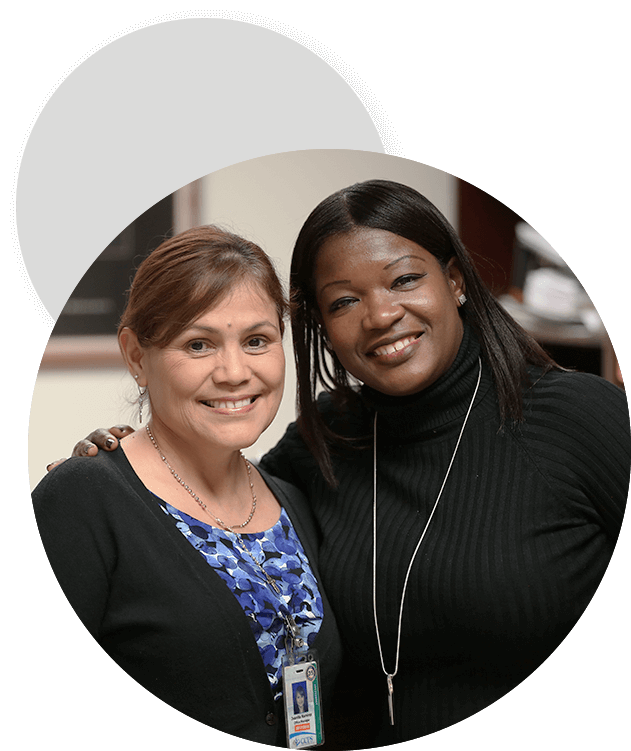Teacher efficacy is the level of confidence teachers have in their ability to guide students to success (CU-Portland).
This includes helping students learn, building effective programs for students, and effectively changing student learning (Gkolia, Belia, & Koustelios, 2014).

When it comes to student performance on reading and math tests, a teacher is estimated to have two to three times the impact of any other school factor, including services, facilities, and even leadership.
Teachers with strong efficacy exhibit:
Given a leadership opportunity, even as a new teacher, there is an immediate urgency to become proficient in the content.
(Preus, 2011)

When a group of teachers share the belief in their ability to positively affect students, it is commonly known as collective teacher efficacy. Collective teacher efficacy is ranked as the NUMBER-ONE factor influencing student achievement (Hattie, 2016).
With an effect size of 1.57, collective teacher efficacy is:
Note: An effect size of 0.2 is relatively small, an effect size of 0.4 is medium, and an effect size of 0.6 is large (Hattie, 2009).

“Fostering collective teacher efficacy is a timely and important issue if we are going to realize success for all students”
(Donohoo, J., 2017).
The See-Do-Get Model (Covey, 1989) states that how we see things (our paradigm) affects what we do, and what we do impacts the results we get.
When teachers see themselves as capable of impacting students’ learning, they persist in helping every student see and reach his or her potential, which in turn, leads to higher student achievement. This cycle empowers teachers and increases their self- and collective efficacy.
See |
Do |
Get |
| Leader in Me Core Paradigm: Everyone can be a leader. | As the school works through the Leader in Me whole-school improvement process, a system of shared leadership is built. | Teachers are empowered to make more decisions, and professional-development opportunities contribute to personal and professional growth. |
| Leader in Me Core Paradigm: Everyone has genius. | As a culture of leadership develops, teachers’ unique gifts and talents are recognized and opportunities to grow are put into place. | Teachers feel valued for their skills, creating a supportive environment for all. |
| Leader in Me Core Paradigm: Change starts with me. | Many of your students are having difficulty with the proper use of quotation marks. Rather than assume students aren’t paying attention or don’t care, you consider alternative strategies and instructional methods with colleagues. You choose several to try with students. |
Teachers believe they have the ability to impact student learning. |
| Leader in Me Core Paradigm: Educators empower students to lead their own learning. | Some of your students are having difficulty counting by 10s. You brainstorm various strategies with each of them and agree on one or two. Each student sets a goal and tracks his or her own progress. | Teachers recognize they are impacting students by teaching them lifelong skills. |
Bandura, A. (1993). “Perceived Self-Efficacy in Cognitive Development and Functioning.” Educational Psychologist, 28, 117–148.
Canrinus, E.T., Helms-Lorenz, M., Beijaard, D., Buitink, J., & Hofman, A. (2011). “Self-efficacy, job satisfaction, motivation and commitment: exploring the relationships between indicators of teachers’ professional identity.” European Journal of Psychological Education 27, 115–132. doi: 10.1007/s10212-011-0069-2
Donohoo, J. (2017). Collective Efficacy: How Educators’ Beliefs Impact Student Learning. Thousand Oaks, CA: Corwin.
Gallimore, R., Ermeling, B., Saunders, W., & Goldenberg, C. (2009). “Moving the Learning of Teaching Closer to Practice: Teacher Education Implications of School-Based Inquiry Teams.” The Elementary School Journal, 109(5), 537–553.
Gkolia, A., Belia, D., & Koustelios, A. (2014). “Teacher’s Job Satisfaction and Self-Efficacy: A Review.” European Scientific Journal. 10(22) 321–342.
Goddard, R., Hoy, W., & Woolfolk Hoy, A. (2004). “Collective Efficacy Beliefs:
Theoretical Developments, Empirical Evidence, and Future Directions.” American
Educational Research Association, 33(3), 3–13.
Hattie, J. (2016). Third Annual Visible Learning Conference (subtitled “Mindframes
and Maximizers”), Washington, DC, July 11, 2016.
Hattie, J. (2009). Visible Learning: A Synthesis of Over 800 Meta-Analyses Relating to Achievement.
New York, NY: Routledge.
Katz, S. & Dack, L.A. (2013). Intentional Interruption: Breaking Down Learning Barriers to Transform Professional Practice. Thousand Oaks, CA: Corwin.
Mojavezi, A., & Tamiz, M. P. (2012). “The Impact of Teacher Self-Efficacy on the Students’
Motivation and Achievement.” Theory and Practice in Language Studies, 2(3).
Preus, J. (2011). “Examining an Inquiry-Based Approach for New Teacher Training.” Dissertation, University of California.
RAND (2018). “Teachers Matter: Understanding Teachers’ Impact on Student Achievement.” Santa Monica, CA: RAND Corporation.